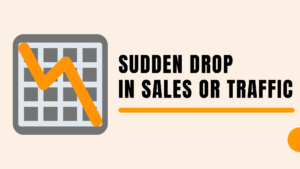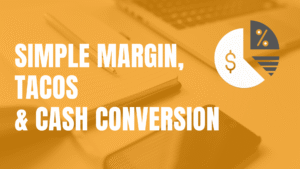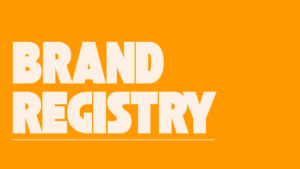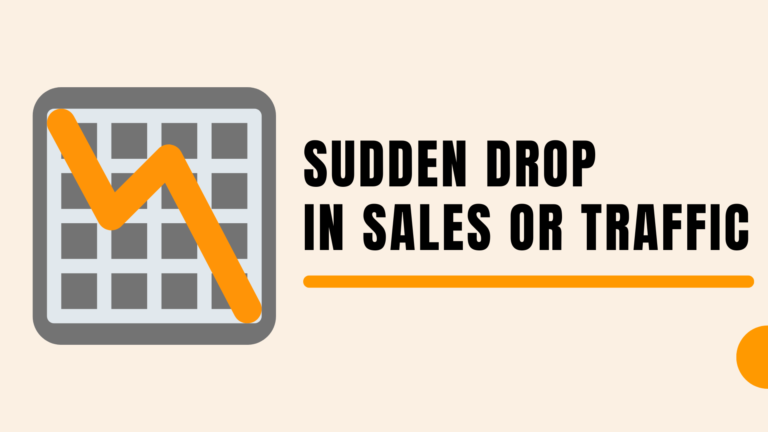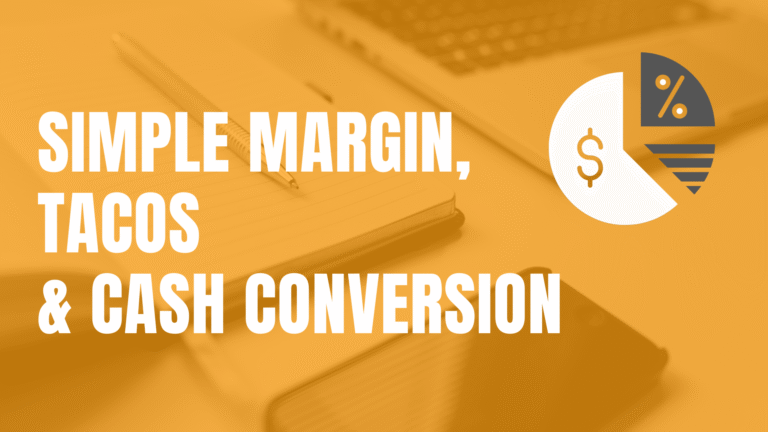When you create your advertising strategy on Amazon, it’s important to understand the differences between the various ad types. By examining Sponsored Display and Sponsored Products, you can identify the ad format that best fits your goals. Carefully assess your marketing objectives to choose the most effective ad strategy.
Here’s a helpful guide to get you started.
What is Amazon Ads?
Amazon Ads is a digital advertising platform that helps businesses connect with customers. It is designed to meet different marketing goals. Amazon Ads allows brands to increase awareness, engagement, and sales through various ad formats and placements both on and off Amazon.
Sponsored ads, for instance, are displayed prominently on search results pages and product detail pages. Meanwhile, additional formats broaden their reach to external websites, streaming television, and Amazon-owned channels.
Amazon Ad Products and Formats:
Sponsored Ads:
- Sponsored Products
- Sponsored Brands
- Sponsored Display
- Sponsored TV
Brand Shopping Experiences:
- Brand Stores
- Amazon Live
Ad Formats:
- Video Ads
- Audio Ads
- Display Ads
- Out-of-Home Ads
- Device Ads
SUMMARY: Amazon Ads helps brands connect with consumers. It facilitates interaction throughout the entire shopping experience. By using Amazon Ads, companies can improve product visibility, increase brand awareness, and drive significant sales while keeping control of budgets and campaign results.
What is Amazon Sponsored Display?
Amazon Sponsored Display is designed for businesses, whether they sell directly on Amazon or not. This type allows businesses to reach customers across the Amazon store and thousands of third-party apps and websites.
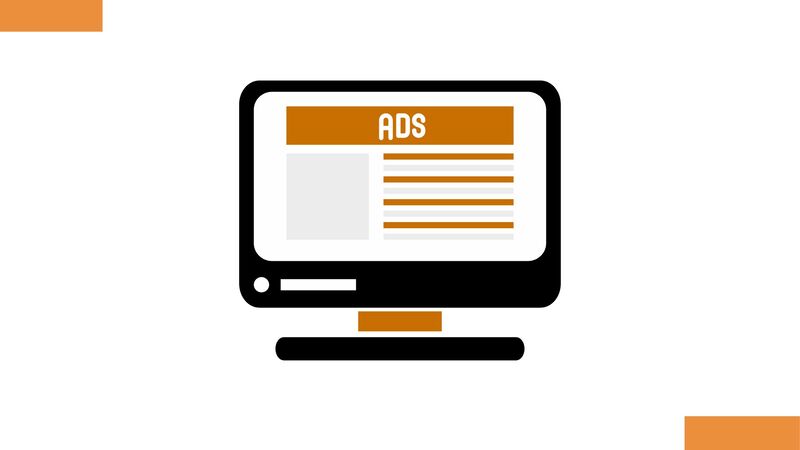
Who Can Use Amazon Sponsored Display?
- Businesses that sell on Amazon, Sponsored Display is available to sellers enrolled in Amazon Brand Registry, book vendors, vendors, and agencies managing clients on Amazon.
- Businesses that don’t sell on Amazon (Beta), even if you don’t sell on Amazon, whether you offer products, services, or experiences like theater tickets or educational programs, you can use Sponsored Display to drive traffic and increase visibility.
How Amazon Sponsored Display Works
Sponsored Display focuses on audience behaviors and products. Instead of bidding on keywords, you select a targeting strategy based on the audience or specific products/categories.
You can select a bid optimization goal, and Amazon’s machine learning will adjust your bids in real-time to meet it:
- Optimize for Conversions (CPC): Targets shoppers most likely to purchase your product.
- Optimize for Page Visits (CPC): Targets shoppers most likely to click your ad to visit the product page.
- Optimize for Viewable Impressions (vCPM): Targets shoppers to maximize ad views. This is best for pure brand awareness goals.
Ad Placements: Where Do Sponsored Display Ads Appear on Amazon?
These ads appear in high-visibility locations to maximize impact. Typical placements include:
- Amazon homepage
- Search results pages
- Product detail pages
- Third-party websites and apps that extend reach beyond Amazon properties, including Twitch and IMDb.
With new features such as AI-generated images, global expansion into Amazon Business, and customized account structures for easier campaign management, these enhancements give advertisers more tools to optimize campaigns and reach audiences effectively.
Why Use Sponsored Display?
Sponsored Display is designed for ease of use. It helps businesses:
- Connect with customers through various platforms, including Amazon product detail pages, the homepage, and proprietary sites like IMDb, along with third-party applications and websites.
- Sponsored Display uses audience signals from shopping and streaming behavior to deliver dynamically optimized creatives, ensuring relevant messaging reaches the right people.
- For companies trading on Amazon, Sponsored Display can enhance product page visits and conversion rates. For sellers not on Amazon, it can generate website traffic and improve overall brand awareness.
Pros of Amazon Sponsored Display
- Expanded Reach (On and Off Amazon): Ads give your brand visibility far beyond standard search results.
- Advanced Targeting Capabilities: Sponsored Display goes beyond keyword targeting and lets you reach audiences based on product views/retargeting, interests/audience segments, and product targeting.
- Brand Awareness and Consideration: Sponsored Display is effective for upper- and mid-funnel marketing goals, helping to increase brand visibility and keep your products top-of-mind, even when shoppers are browsing elsewhere.
- No Minimum Budget & CPC Model: There is no minimum spend requirement, and campaigns typically operate on a Cost-Per-Click (CPC) basis.
- Retail-Awareness: Ads are automatically paused if the product is out of stock or no longer has the Buy Box.
- Flexibility: You can upload custom images and add headlines or logos, giving more creative control than standard Sponsored Product ads.
Cons of Amazon Sponsored Display
- Because these ads often target shoppers earlier in the buying journey or off Amazon, their conversion rates can be lower than those of high-intent Sponsored Product ads.
- Sponsored Display generally offers fewer sophisticated creative choices than Amazon’s Demand-Side Platform (DSP).
What is Amazon Sponsored Products?
Amazon Sponsored Products are cost-per-click (CPC) ads that promote individual product listings on Amazon as well as select premium apps and websites. They provide a straightforward, cost-effective way for businesses to increase product visibility, drive sales, and reach customers at the right moment in their shopping journey.
Amazon Sponsored Products are one of the most fundamental and effective advertising solutions on the Amazon platform.
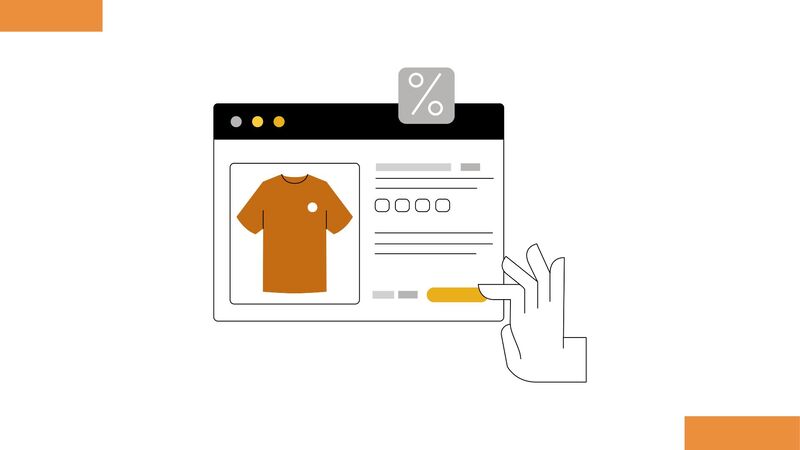
Who Can Use Amazon Sponsored Products?
Sponsored Products are available to professional sellers, vendors, book vendors, Kindle Direct Publishing (KDP) authors, and agencies managing clients. To be advertised, products must be in eligible categories and qualify for the Featured Offer.
Right now, adult products, used or refurbished items, and products in restricted categories cannot be advertised.
How Amazon Sponsored Products Work
Advertisers choose the products they want to promote and can select relevant keywords manually or let Amazon’s system automatically target appropriate keywords. Ads appear in desktop and mobile browsers, as well as in the Amazon mobile app.
When shoppers click an ad, they are taken to the information page of the promoted product. Advertisers manage their bids and budgets, incurring costs only when someone clicks on their advertisement.
When launching a campaign, an advertiser sets a bid for the keywords they want to target. This bid shows the maximum amount they are willing to pay each time a customer clicks on their ad.
Ad Placements: Where Do Sponsored Products Appear on Amazon?
Sponsored Products ads appear in high-visibility locations across Amazon and beyond:
- On Amazon: At the top of, alongside, or within shopping results, and on product detail pages.
- Beyond Amazon: Ads can also appear on Amazon-owned and operated sites and third-party apps and websites, with support for desktop, mobile, and tablet experiences.
Why Use Sponsored Products?
- Ads take shoppers directly to product detail pages, helping increase sales.
- Sponsored Products appear only when items are in stock and include trusted Amazon shopping attributes, helping customers make informed decisions.
- With Sponsored Products, advertisers can set daily or lifetime budgets to control spending effectively.
- Optimize for your budget. Operating on a CPC model ensures you only pay for customers who click your ad.
- Reach relevant shoppers with flexible keyword and product targeting options.
Pros of Amazon Sponsored Products
- High Purchase Intent: Ads appear directly where shoppers are searching with purchase intent, resulting in higher conversion rates than external advertising channels.
- Fast & Easy Setup: It uses your existing product information, like images, title, and price, to start campaigns quickly.
- Precise Keyword Targeting: It provides both manual and automatic campaigns to aim at specific search terms or find effective keywords.
- Full Budget Control: You only pay when a shopper clicks your ad, and you can manage daily budgets and individual bids.
Cons of Amazon Sponsored Products
- High competition makes advertising essential, especially for new products.
- Sponsored Products are highly popular, driving up CPCs and reducing profit margins in competitive categories.
- They require constant optimization. You need to adjust bids, refine keywords, and manage negative keywords to avoid wasting money.
- Ads only run when your product has the Buy Box. Losing it halts your campaign and can waste bid spend if inventory or pricing is inconsistent.
Read more Amazon Sponsored Brands Video Ads
What is the Difference between Sponsored Display and Sponsored Products on Amazon?
| Feature | Amazon Sponsored Display | Amazon Sponsored Products |
| Purpose | Primarily for brand awareness, retargeting, and reaching audiences both on and off Amazon. | Driving direct product sales by promoting individual listings on Amazon. |
| Targeting | Audience-based (product views, interests, purchase behavior) and product/category targeting. | Keyword-based and product targeting. |
| Ad Placement | Amazon homepage, search results, product detail pages, third-party websites, apps, Twitch, IMDb. | Amazon search results, product detail pages, Amazon-owned sites, select third-party apps/websites. |
| Bid/Optimization Options | CPC for conversions or page visits, vCPM for viewable impressions; Amazon adjusts bids via machine learning | CPC model; advertisers manually set keyword bids and budgets. |
| Users Eligible | Sellers enrolled in Amazon Brand Registry, vendors, book vendors, and some non-Amazon sellers (Beta). | Professional sellers, vendors, book vendors, KDP authors, and agencies managing client accounts |
| Buyer Journey Targeting | Shoppers earlier in the buying journey. | High-intent shoppers actively searching to buy. |
How Much Does Amazon Sponsored Ads cost?
Amazon Ads work with any advertising budget. There’s no minimum spend required.
All sponsored ads on Amazon work on a cost-per-click (CPC) basis. You only pay when a customer clicks on your ad. When you set up your campaign, you select your daily budget and the maximum bid for each click. This way, you won’t pay more than your specified bid.
For Sponsored Products and Sponsored Display, you set a daily budget, which is the maximum amount you’re willing to spend each day. With Sponsored Brands, you can set both a daily budget and a budget for the whole campaign, which is the total spending limit for the campaign. You can adjust daily budgets up or down at any time, but you can only increase campaign-level budgets.
Are Amazon Ads Effective?
By 2030, the e-commerce market is projected to reach 4.0 billion users. In response to intensifying competition, online sellers have significantly increased their advertising budgets to stand out from competitors and capture customer attention.
On Amazon, ads are an effective tool. Amazon’s primary advantage is that its users are typically at the bottom of the sales funnel—they are actively searching with the intent to purchase. This results in much higher conversion rates compared to general e-commerce traffic.
As online shops invest more in advertising, they need to select the ad formats and channels that will best align with their marketing objectives and effectively connect with their desired audience.
Conclusion
A successful Amazon advertising strategy requires that your spending aligns with your objectives. If a product is doing well in Sponsored Products campaigns, consider increasing the budget for Sponsored Display to engage audiences further along their purchasing journey.
FAQs
What does a sponsored product mean on Amazon?
A Sponsored Product on Amazon is a paid advertising option that highlights a specific product listing. This is the most prevalent type of PPC advertising accessible to sellers and vendors on Amazon. When you come across a product listing labeled “Sponsored” on Amazon, it indicates that the seller or vendor has paid for that particular product to be featured for a relevant search term.
What are the different types of sponsored ads on Amazon?
Primary types of Amazon Sponsored Ads:
– Sponsored Products
– Sponsored Brands
– Sponsored Display
– Sponsored TV
With Sponsored Brands, cost-per-click ads showcase a brand by presenting a personalized headline, logo, and several products. These ads are prominently displayed in search results to enhance brand visibility and recognition.
What are the requirements for sponsored display on Amazon?
Sponsored Display is available to professional sellers enrolled in Amazon Brand Registry or to Amazon Vendors. The products you want to advertise must be in eligible categories.
Businesses that do not sell on Amazon can also use Sponsored Display to drive traffic to their own external websites.
What is a benefit of using Amazon sponsored ads?
One of the main benefits of using Amazon Sponsored Ads is better product visibility and immediate placement at the top of search results. When a customer looks for a product, sponsored ads can quickly appear in prominent spots. The ads follow a cost-per-click (CPC) model, which means you only pay when a shopper clicks on your ad.
Should you buy sponsored items on Amazon?
Sellers have costs to make sure their products are displayed prominently, often at the top of search results or on a competitor’s product page. When choosing what to buy, focus on the specific details in the product listing, including its information, reviews, brand, and price. A sponsored listing is a type of paid advertising and does not truly reflect the product’s quality or value.

